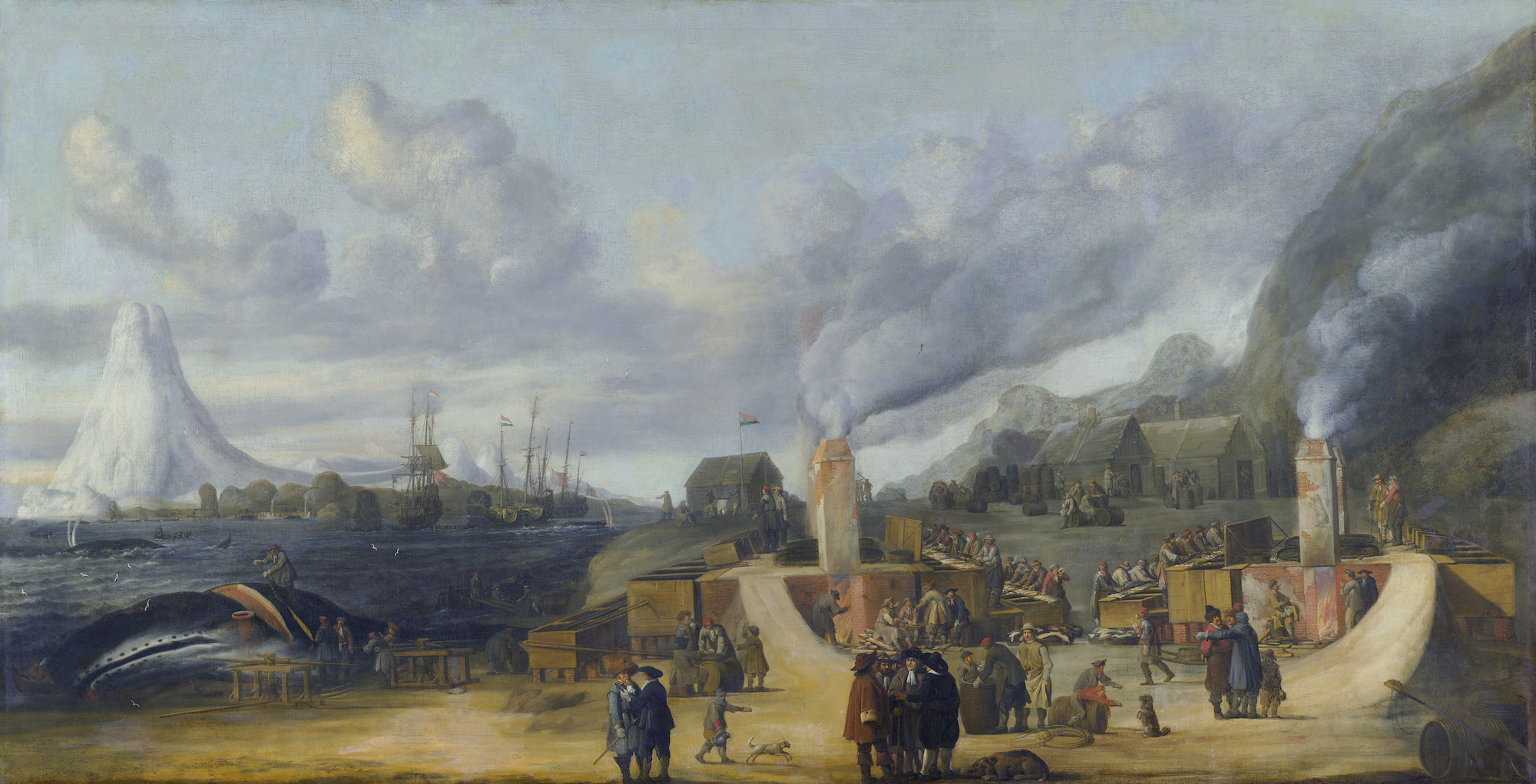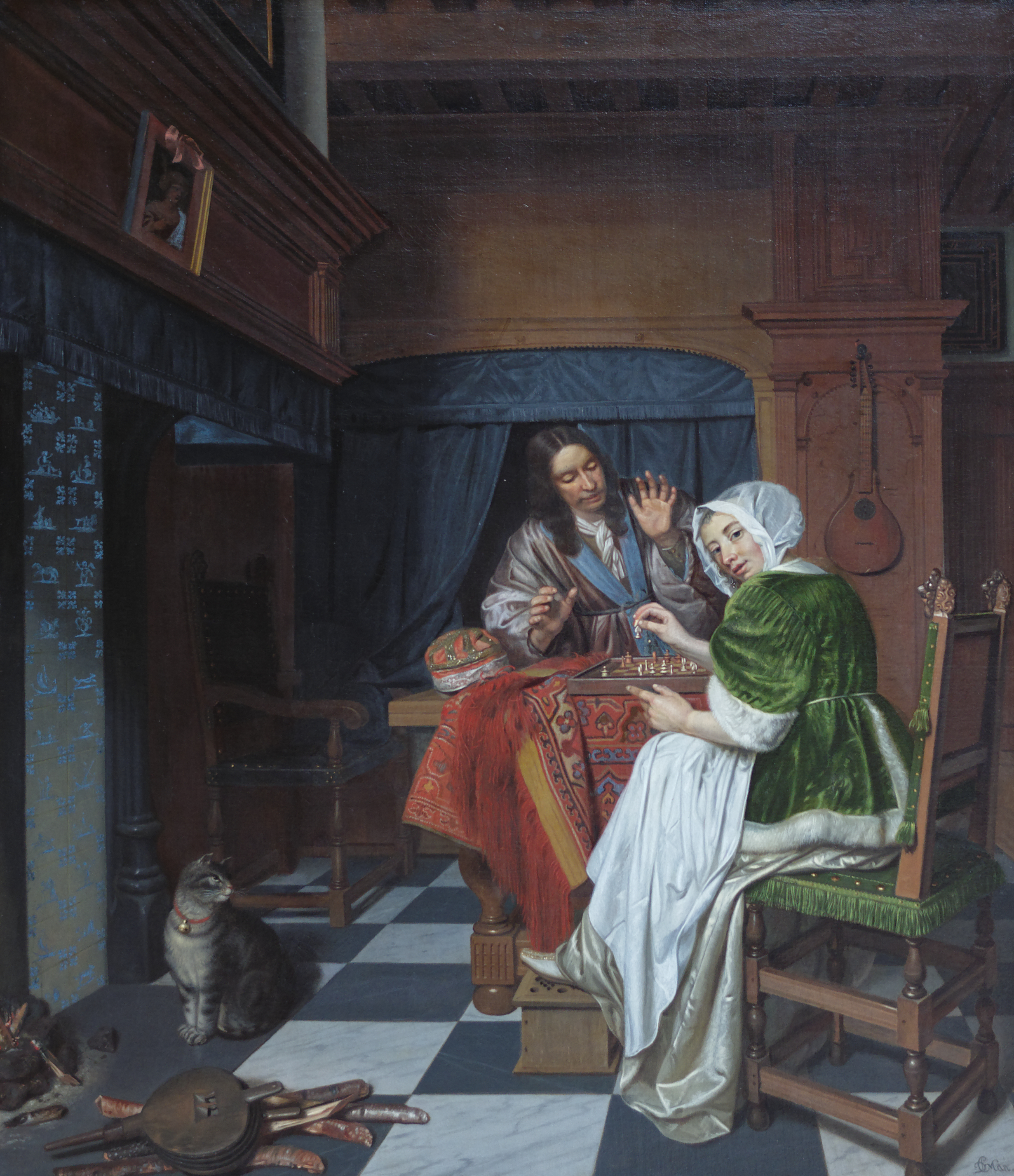European whale hunting flourished in the seventeenth and eighteenth centuries. The most important species of whale for seventeenth- and eighteenth-century whalers was the bowhead whale. The bowhead whale was favoured because the blubber of this species is very thick and therefore contains large amounts of oil, it also has the largest baleen plates. The Dutch whaling history started at the end of the sixteenth century, following the English example. Both nations, however, could not have developed whale hunting without the help of the Basque people. The Basque people had hunted whales for centuries, beginning in the twelfth century. Their experience was used by the Dutch and English in developing a whaling industry, and Basque people were the teachers of the northwest European whale hunters. At the end of the sixteenth century, the Dutch made several journeys to the north in search of a northeast passage to Asia. The growing population of the Dutch Republic caused an increased demand for oils and soap. These demands could be lifted by the “train oil” (from the Dutch traan) obtained from the whales.
The Noordsche Compagnie hunted whales in the bays of Spitsbergen (the name was supposed to describe the "pointed mountains"), and the whale products were prepared at land stations at “Smeerenburg” at Amsterdam Island, the Dutch territory at Spitsbergen. However, the number of whales in the bays decreased rapidly as a result of intensive hunting and climate changes. Because of the diminishing population of whales in the bays, the whales were followed into the open sea and even into the ice. The products were now directly shipped to and processed in the homeland. The stations at Spitsbergen were all abandoned at the end of the seventeenth century. Cornelis de Man became a successful painter in Delft, and painted a prestigious group portrait for the Anatomy guild there, as well as a renowned painting for the Amsterdam Noordsche Compagnie (a northern branch of the Amsterdam Dutch East India Company). This unusual painting shows a studio reconstruction of the factory in Spitsbergen; in turn based on a representation of an original Dansk hvalfangststation (Danish whaling station) in Copenhagen Bay by A.B.R. Speeck (1634). He added all sorts of arctic details to this painting, though he never traveled further north than Denmark. This painting is our user Friederick's favourite. If you would like to suggest your favourite piece or artist, please let us know! :)
- Zuzanna
--
Do you appreciate our work? Find out how can you support DailyArt: http://support.getdailyart.com


 Cornelis de Man
Cornelis de Man